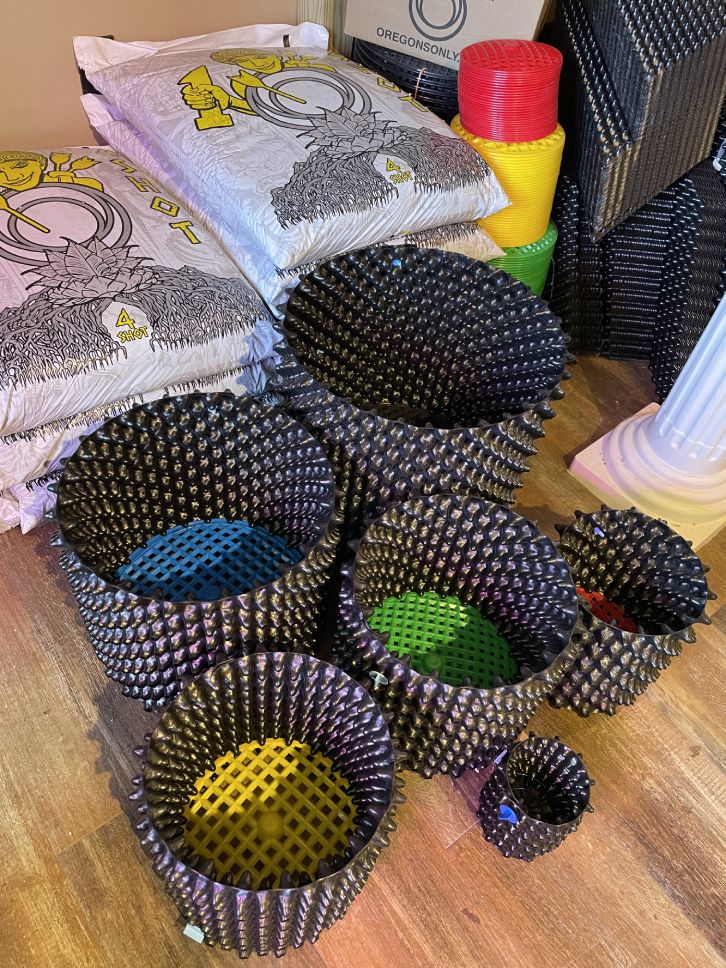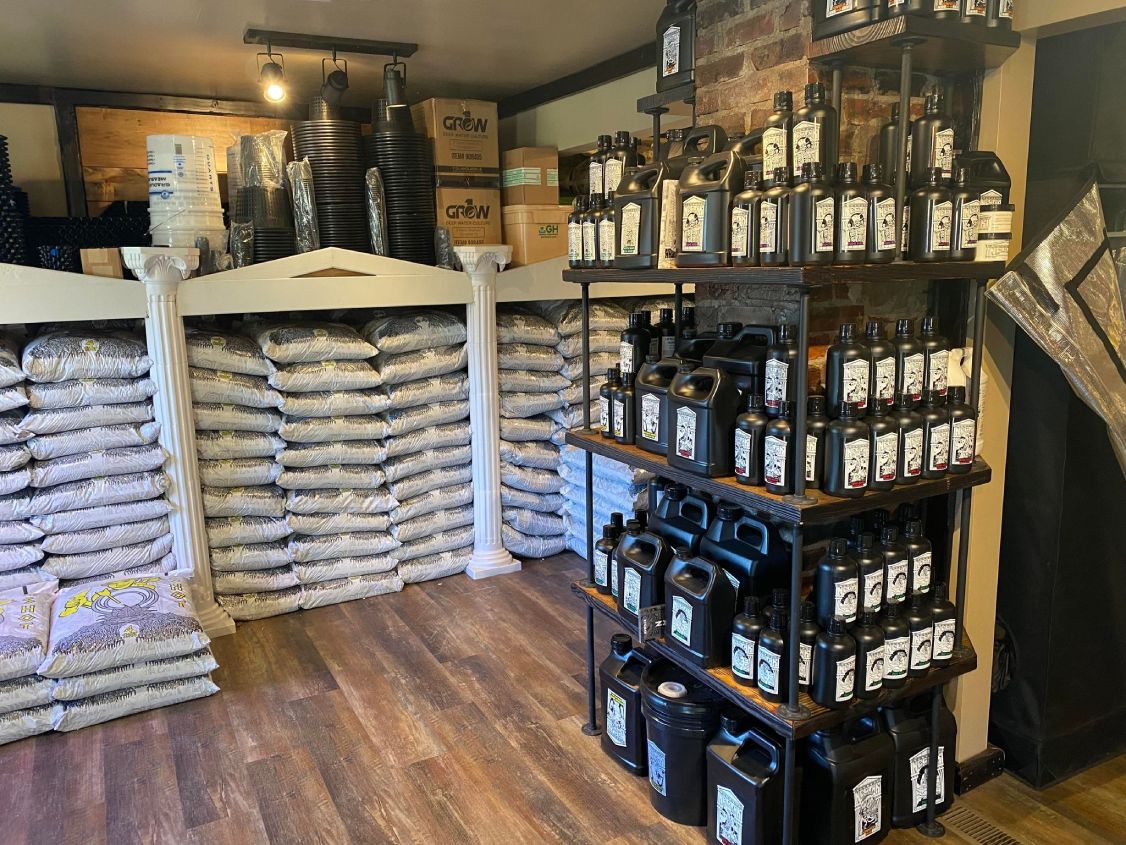The Ultimate Overview to Hydroponic Equipments and Techniques
On the planet of contemporary farming, hydroponic systems have actually emerged as a revolutionary approach for cultivating plants without soil. The thorough equilibrium of water, nutrients, and light in hydroponic setups offers a promising choice to typical farming techniques. As we discover the intricacies of hydroponics in this thorough overview, we will certainly browse through the various types of systems, check out the necessary nutrients vital for plant development, and explore advanced methods that can significantly improve yields. What happens when usual problems occur in hydroponic systems? Remain tuned to unwind the troubleshooting methods that can make or break an effective harvest.
Benefits of Hydroponic Systems
Hydroponic systems provide a plethora of advantages, including reliable resource utilization and accurate nutrient delivery to plants. By providing a controlled atmosphere for plant development, hydroponic systems enable ideal water and nutrient use, resulting in greater yields contrasted to conventional soil-based growing. This effectiveness not just conserves resources however also reduces waste, making hydroponic systems eco-friendly.
Moreover, the exact distribution of nutrients in hydroponic systems enables personalization based on the details requirements of each plant selection. This targeted approach ensures that plants get the best equilibrium of vital nutrients, promoting much healthier development and minimizing the danger of nutrient shortages or imbalances. In addition, the capability to check and change nutrient levels in real-time maximizes plant productivity and general crop high quality.
In addition, hydroponic systems eliminate the requirement for pesticides and herbicides, as the closed-loop system lowers the threat of bugs and conditions that are typically discovered in soil-based agriculture - The Indoor Earthworm. This not only profits the plants and the setting yet additionally contributes to creating cleaner, healthier plants for intake
Sorts Of Hydroponic Setups

Deep Water Society (DWC) involves suspending plant roots in a nutrient solution, enabling enough oxygenation. Nutrient Movie Method (NFT) utilizes a superficial stream of nutrient service streaming over the plant origins, supplying a continuous supply of nutrients. Ebb and Flow systems flooding the plant roots at periods, ensuring they obtain nutrients and oxygen. Drip systems include dripping a nutrient service onto the plant origins, providing precise control over feeding. Aeroponics mists the plant origins with a nutrient remedy, taking full advantage of oxygen absorption.
Each kind of hydroponic configuration has its advantages and is suited to different plant varieties and development stages. Recognizing the unique attributes of these systems can aid hydroponic cultivators pick the most suitable arrangement for their certain requirements and choices.
Vital Nutrients for Hydroponics
In hydroponic systems, plants count on an accurate equilibrium of vital nutrients to flourish and expand successfully. These essential nutrients are critical for various plant functions such as photosynthesis, root development, and total development. The primary macronutrients needed by plants in hydroponic systems are phosphorus, potassium, and nitrogen. Nitrogen is crucial for leafed green development, phosphorus aids in root growth and flower/fruit production, while potassium helps in total plant health and disease resistance.
Along with macronutrients, plants likewise need secondary nutrients like calcium, magnesium, and sulfur, as well as trace elements such as iron, copper, zinc, and manganese (The Indoor Earthworm). These nutrients are crucial for ensuring that plants have all the essential foundation to execute necessary biological procedures

Advanced Methods for Maximum Return
To achieve optimal yields in hydroponic systems, farmers can implement innovative techniques that enhance plant development and productivity. One such strategy is making use of supplemental illumination. By providing fabricated lights such as LED or high-pressure salt lights, cultivators can extend the variety of light hours plants obtain each day, advertising faster growth and raised returns. An additional advanced method is the implementation of CO2 supplementation. Increasing the degrees of co2 in the expanding environment can boost photosynthesis and boost plant development substantially. Furthermore, find here utilizing methods like plant training and pruning can aid optimize light circulation and air movement, ensuring that all parts of the plant obtain appropriate light and nutrients. Furthermore, using automated systems for nutrient delivery and monitoring can assist maintain optimum nutrient levels, decreasing the threat of shortages or inequalities that can hinder plant development. By incorporating these sophisticated methods right into their hydroponic systems, growers can make the most of yields see this site and achieve abundant harvests.
Troubleshooting Common Hydroponic Issues
One widespread trouble is nutrient deficiencies, where plants lack essential components for healthy and balanced development. Preserving the proper pH array specific to the plant being expanded is important for optimum nutrient uptake. By quickly identifying and dealing with these typical hydroponic concerns, farmers can maintain healthy and balanced plants and make the most of yields in their hydroponic systems.
Final Thought
In final thought, hydroponic systems use many benefits for growing plants effectively. With cautious preparation and attention to information, hydroponic systems can transform the way plants are grown, leading to even more productive and sustainable agricultural practices.
By supplying directory a regulated setting for plant development, hydroponic systems make it possible for optimal water and nutrient usage, leading to higher returns contrasted to traditional soil-based cultivation. The Indoor Earthworm. Nutrient Movie Strategy (NFT) makes use of a shallow stream of nutrient option flowing over the plant origins, providing a consistent supply of nutrients. Surveillance and changing nutrient degrees based on plant growth phases is crucial to preventing nutrient deficiencies or toxicities and optimizing plant performance in hydroponic systems
Additionally, utilizing techniques like plant training and trimming can aid enhance light circulation and airflow, making sure that all components of the plant get appropriate light and nutrients. Using automated systems for nutrient shipment and surveillance can assist keep optimal nutrient levels, lowering the danger of deficiencies or discrepancies that can prevent plant development.